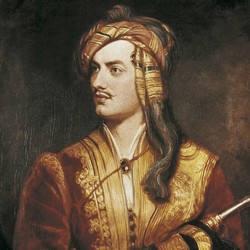Art and the poetic myth of self
Evidence of art shaping life can be seen in how myth and identity-making was formed in Europe during the Romantic period. In the 19th century, the availability of the press expanded to reach a wider audience. Artists like poet George Gordon Byron were able to create and promote a new self-identity. The notion of the artist became regarded as a mythical construct with the ability to reflect collective fantasies of society. How did artists of that period shape the current and complex European identity? What are the links between the myths of the artist to concepts of national and transnational identity? The EU-funded EMOTA (European Myth(s) of the Artist: A Self-constructed Fantasy) project used a multidisciplinary approach to answer these questions. Myth can have various definitions. In literature, it is a classification of narrative discourse. In its broader meaning, however, there are negative connotations that question validity and authority, as compared to other discourse in relation to truth. In this sense, a myth can be viewed as a fabricated story, a misconception and/or a lie. With so many various notions of myth, the project examined why the romantic artist chose to create a myth of self. It also looked at how this established a new identity for the artist and, in turn, the function and impact it has within a larger public context. Looking at some of Byron’s work, it was noted that he created his poetic identity by reacting and attacking contemporary poets and critics of his time. Thus, he formed an artistic identity that is both transnational and timeless and was used as a base for creating the myth of the European artist. In addition to transcending the rigid confines of his present time and space, Bryon used an additional strategy: he dramatised his real-life events. This helped him to consolidate his own personal myth while being the voice of the ‘universal man’. The study traced various means of constructing the myth of the artist and the reasons behind them. As a result, a book will demonstrate the role of language and fiction in constructing a feeling of community and belonging.
Keywords
Self-image, art, myth, Romantic period, 19th Century, Europe, George Gordon Byron, transnational



